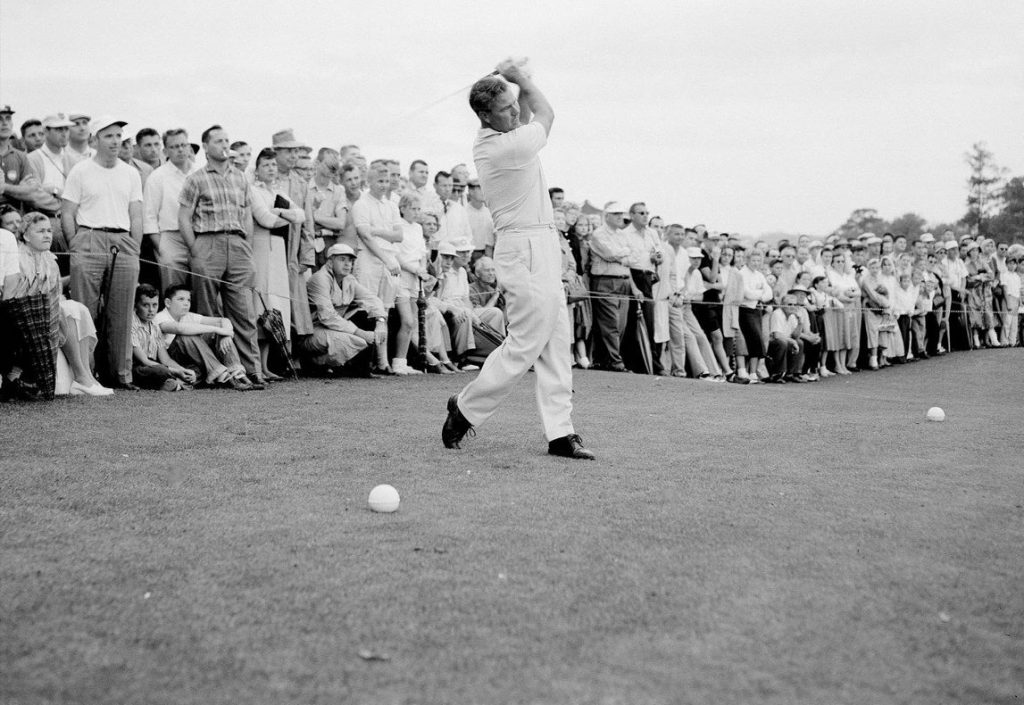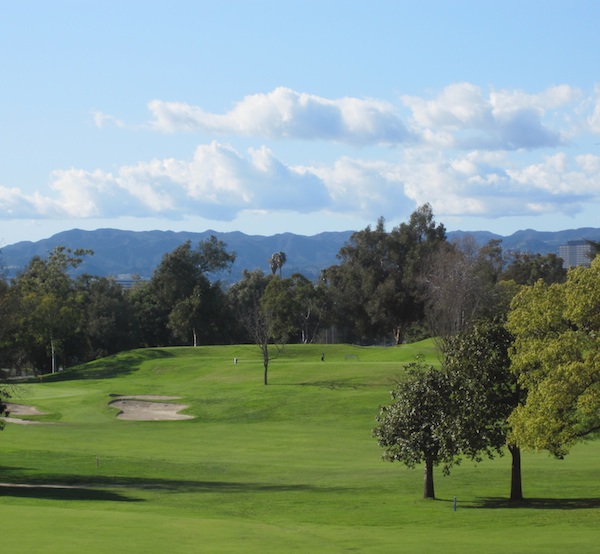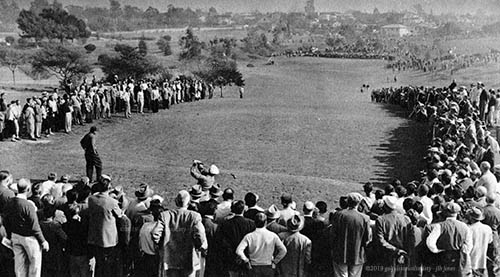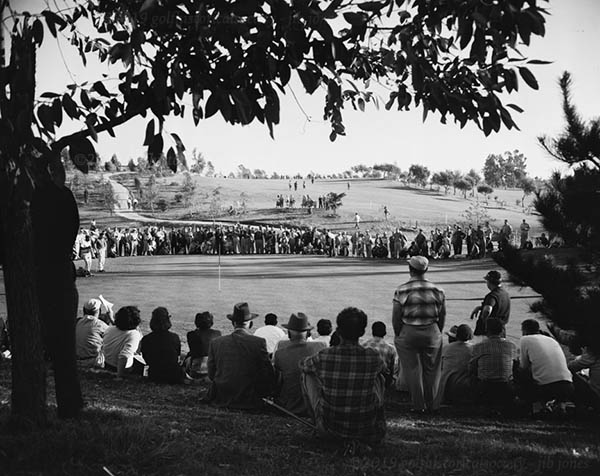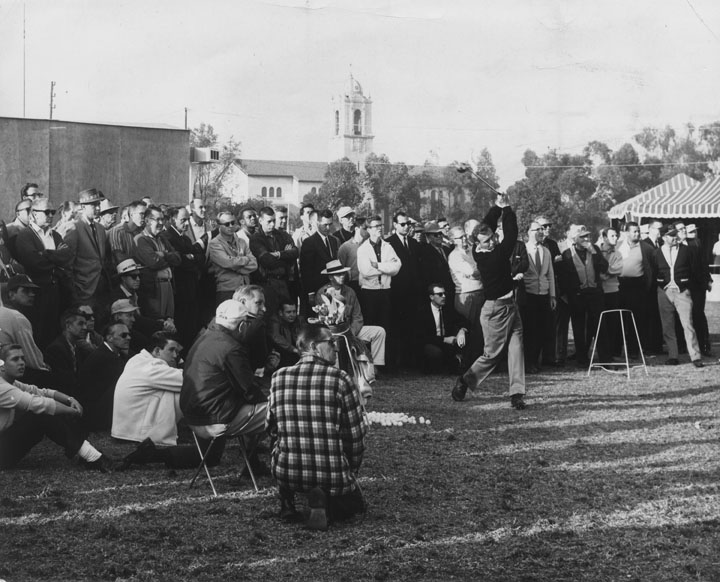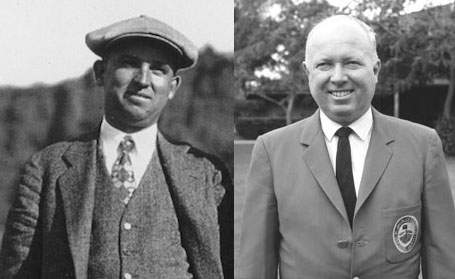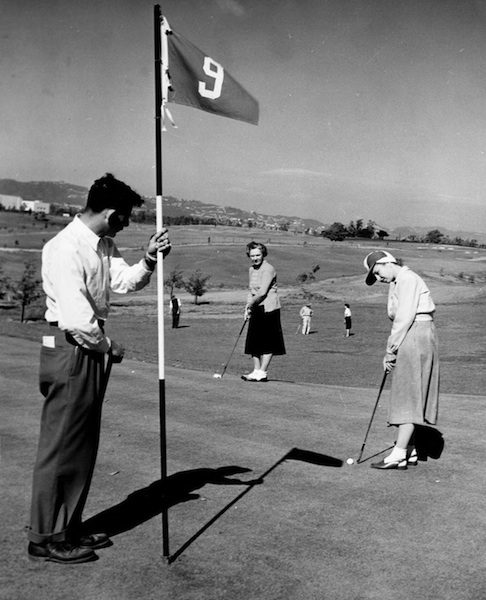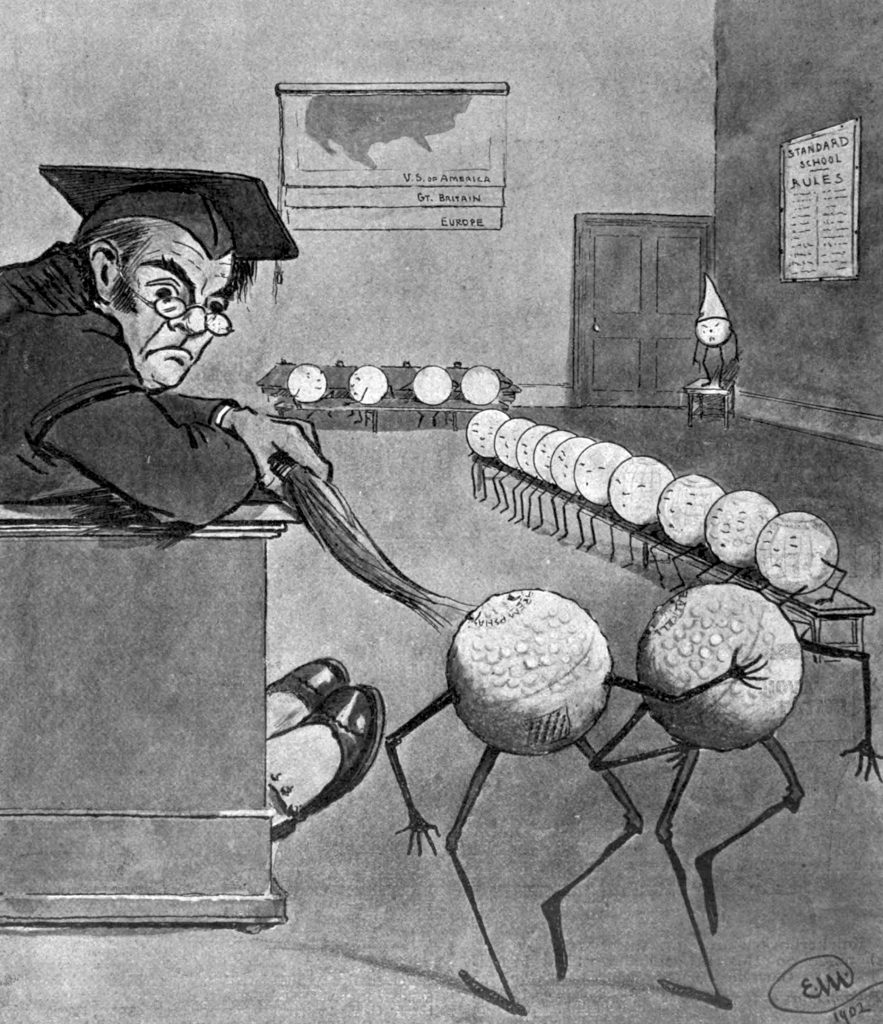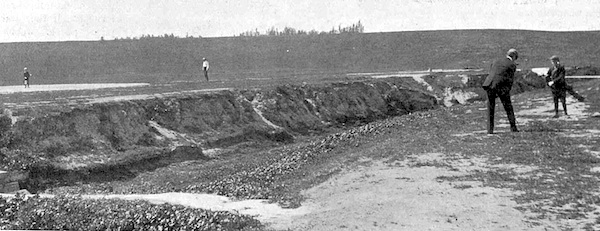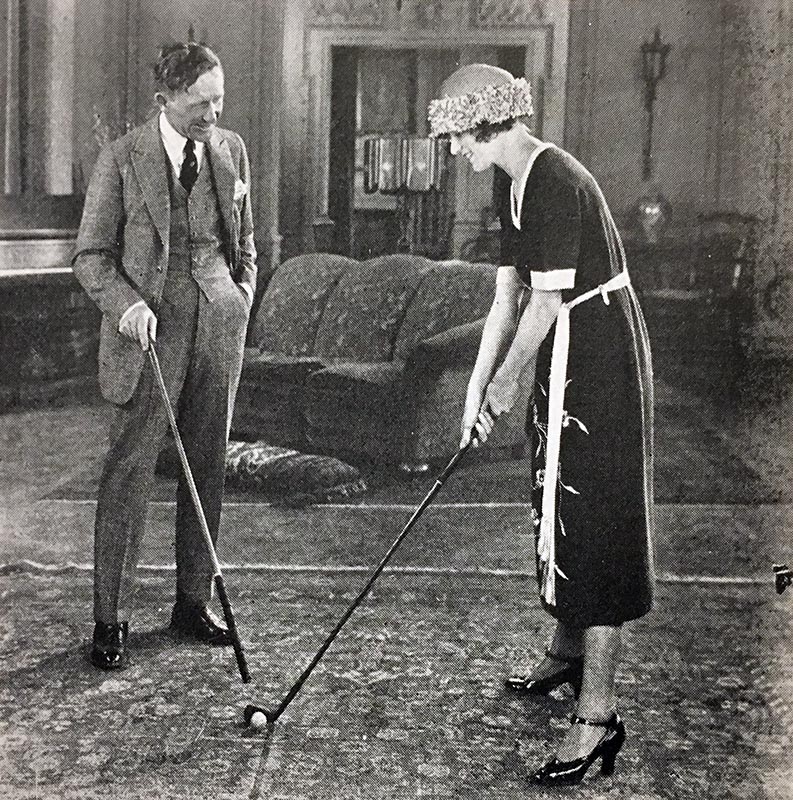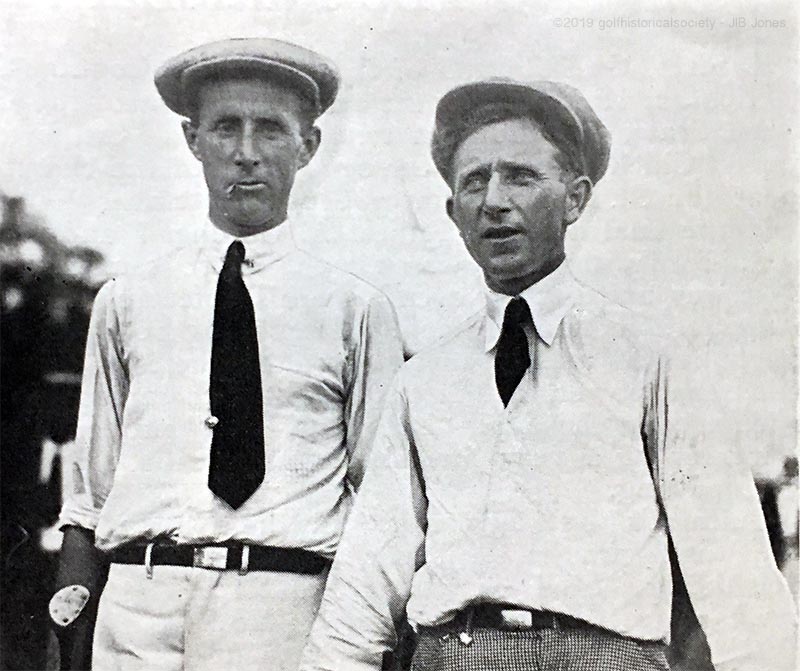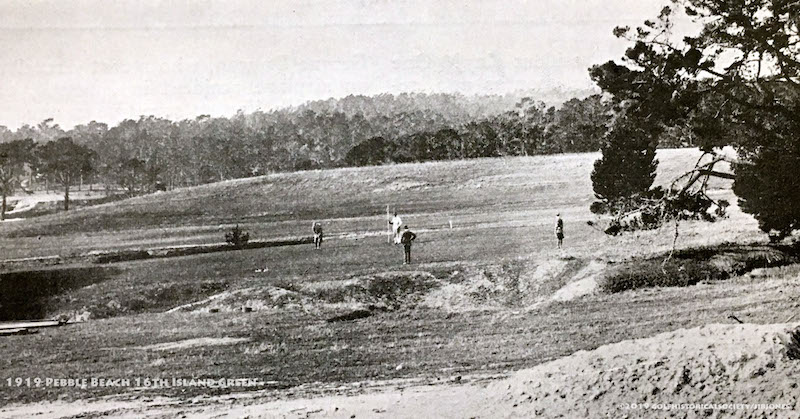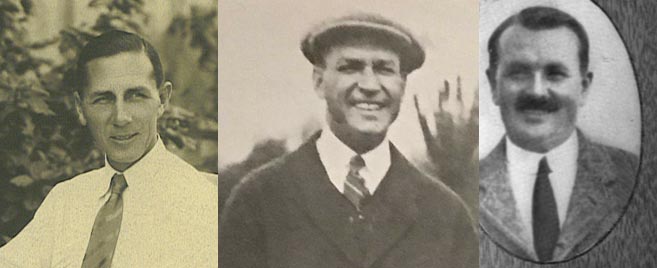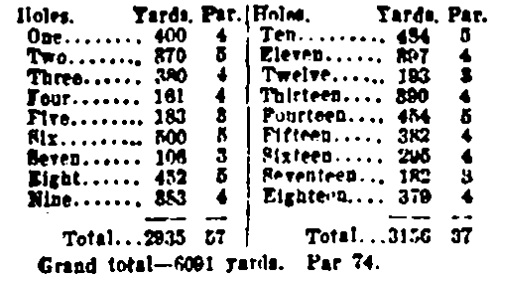by J.I.B. Jones
February 9, 2021
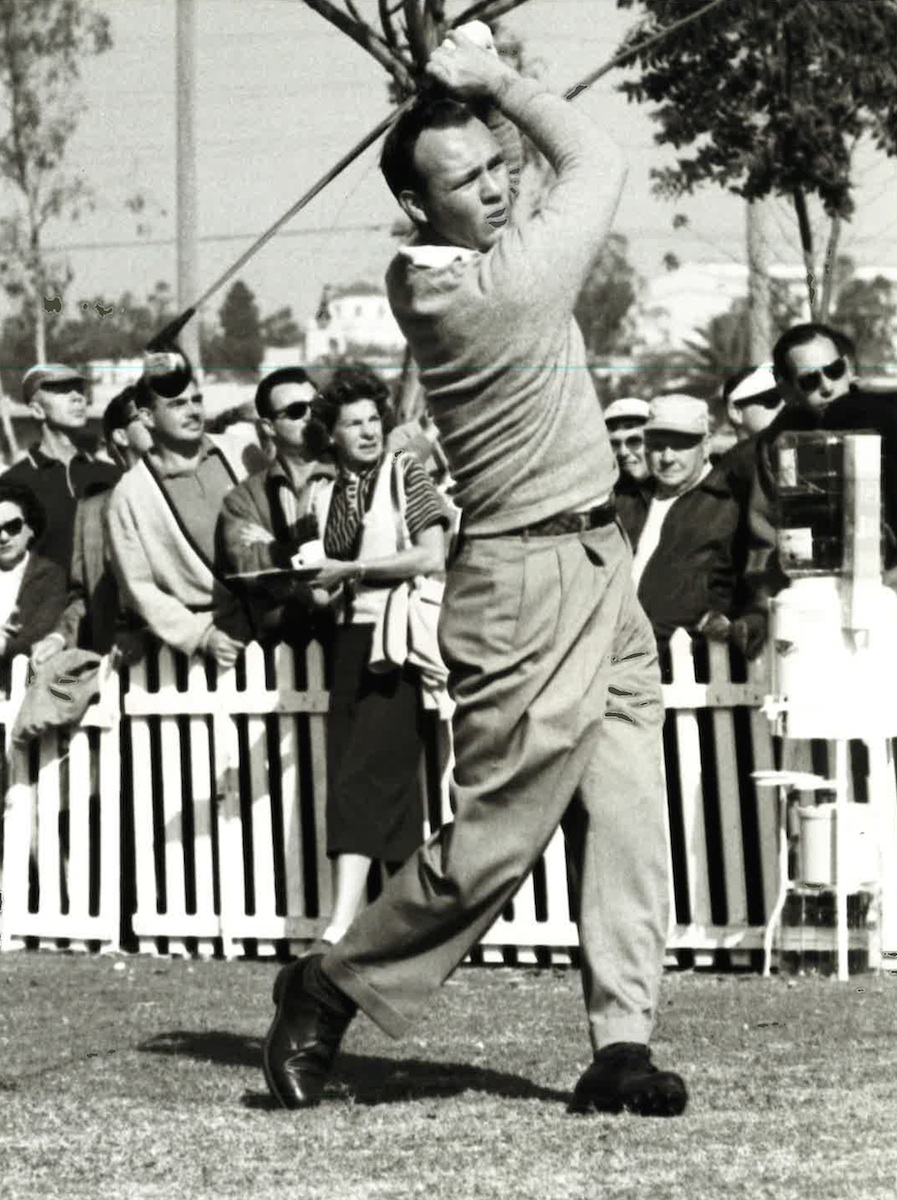
Today we’re looking back 60-years to the 35th Los Angeles Open at Rancho Municipal Golf Course and remembering the 12 that shook the world! The one scored by the late great, handsome, swashbuckling golfer, Arnold Palmer, on his 18th hole of the 1961 tournament.
I also want to share with you how Arnie’s story has been remembered over the years, so, after the “overview” you will find selected quotes from various news sources describing how he got the 12. Arnold himself was asked about it more than a few too many times!
Overview
The 35th Los Angeles Open (“Golf’s Golden Tournament”) was presented by the L.A. Junior Chamber of Commerce and the Southern California Professional Golfers Association. The Rancho Municipal Golf Course measured 7,131 yards and was a “par” 71. The professionals played the course with the front and back nine’s reversed, starting at the regular 10th hole. And like today, some players started on the 1st, and some on the 10th. Also traditional at Rancho for the Los Angeles Open, the Open was played from Friday to Monday. Thursday was Pro-Am day. Television forced the Thursday-Sunday change in 1966.
Interestingly Arnold Palmer “tee’d off” on the 10th, the regular 1st hole, on Friday at 12:14 P.M., playing with Billy Casper (71) and Bo Wininger (74). When he reached the 508 yard par-5 eighteenth hole he needed “par” to finish one-under 70 and stay in contention, but he spoiled it.
Palmer’s drive was perfect and went 270 yards to the middle of the fairway, leaving him a 238 yard uphill shot to a raised green at the end of a 50 yard-wide funnel of “Out of Bounds” fences.
For his second and fourth shots Arnie hit over the 25 foot high driving range fence on the right, and then put his 6th and 8th shots into the middle of Patricia Avenue on the left, with one ball crossing Pico Boulevard. For his 10th stroke he ended up over the flag on the apron of the green on a downhill lie. His approach was short, and his one-putt earned him the 12, scoring 77 for the round. It put him 10-strokes behind the leader Ted Kroll, and led to him missing his only cut of the year by one stroke when he scored 72 in Saturday’s second round.
After the L.A. Open Arnie sped off to San Diego and won the tournament, followed by wins at Phoenix, Baton Rouge, Texas, and topping off his summer by winning the Open Championship at Royal Birkdale in England.
The Stories
1961 01 07 – LA Times – Dick Hyland says: R, R, L, L
“Palmer took a 3-wood and swung. The ball shot straight as an arrow, high and to his right – six feet out of bounds over the 25 foot fence guarding the driving range.
Palmer dropped a ball, swung again. Again out of bounds. Same place.
Again he dropped a ball. Palmer corrected his grip and stance. Overcorrected. Bang. Out of bounds again, this time hole high over the grandstand and 30-ft high fence bordering Patricia Ave.
Palmer did not hesitate. He dropped another ball over his shoulder, stepped back, addressed the ball – and hit it out of bounds behind the stands again!
The fifth ball he played on the hole, for his 10th shot, Palmer slapped past the pin onto the green, the first player to hit past the pin on the long hole all day. The ball trickled a foot off the far side of the green onto the apron 25 ft. from the pin. Palmer finally went into the cup with his 12th stroke.
‘A nice round number.’ he mumbled writing it on the card. The crowd cheered him loudly.
‘What were you trying to do?’
‘I was just trying to get the ball on the green.’
‘What happened?’
‘I just hit some bad shots.’ “
1961 01 07 – LA Times – Paul Zimmerman says: R, R, L, L
“He pushed his first fairway shot over the fence into the driving range. The second went the same place, as Arnold struck with his No. 3 wood.
Boom! went the third high over the screen onto Patricia Ave., as he hooked badly trying to adjust. The fourth one looped into the same place and rolled to Pico.
‘What were you trying to do?‘ someone asked naively.
‘I was just trying to get the ball on the green,‘ was Palmer’s retort as a thin grin broke across his handsome face.“
1961 01 07 – NYT – Arnold Palmer Says: R, R, L, L
“ ‘I pushed a No. 3 wood out of bounds into the practice fairway the first time. Then I pushed another one about in the same spot.‘
‘It is possible I over corrected on the third one and knocked that clear out of the course on the opposite side of the fairways and clear out on the highway. The fourth one went right with it.‘
‘It was a nice round figure, that 12,‘ he quipped as he walked off the El Rancho course, appearing only slightly perturbed.”
1965 01 07 – LA Times – Bill Shirley says: L, R, L, R
“He knocked his second shot out of bounds to the left, dropped another ball and hit it out of bounds to the right…He tried again – and hit another shot out of bounds to the left. Shot No. 5 sailed out of bounds, this time to the right again, presumably to keep the score even.”
1967 01 27 – LA Times – Charles Maher says: L, R, L, R
“On his second shot…Palmer hit a ball right down the middle. That is, it was right down the middle of Patricia Avenue, which borders the course on the west.
Palmer then shot out of bounds on the east side, knocked another ball onto Patricia Avenue, went out of bounds once more in the east…”
1968 01 21 – LA Times – Patrick McNulty says: L, R, L, R
“Palmer blasted off with another power shot that carried 250 yards. Unfortunately, the shot hooked badly, finally bouncing out of bounds on the road.
Then: Whammo! another Palmer shot, this time slicing over into the driving range…dropped another ball. Incredibly this ball too began curving left, falling into the street…Another ball and another slice…”
1982 01 13 – UPI – Plaque says: R, R, L, L. – Palmer says: R, L, L, R
“A permanent plaque describes the 12 as follows: After hitting a perfect drive, Palmer sliced two balls into the driving range and followed with two hooks onto Patricia Avenue, which runs alongside the ninth fairway. He reached the green with his 10th shot and two-putted for his 12.
Palmer, understandably, says he doesn’t remember all the details of the fateful day in the first round of the 1961 tournament. But he said the plaque is wrong.
‘After a pretty good drive, my next shot, a 3-wood, hit the top of the fence before going into the driving range,’ he said. ‘Then my next shot hooked over the fence. I think my next shot went left, too, then the next one went to the driving range again.’ “
1983 01 13 – LA Times – Shav Glick – two right, two left
Palmer – “ ‘The plaque is wrong, though, it wasn’t the first round, it was the second round.’ “
1987 07 18 – Washington Post – Arnold Palmer says: L, R, L, R.
“I took 12 on a par-5 in the L.A. Open once: I wanted to knock a 3-wood on the green, but put it out of bounds to the left. I hit it again and put it out of bounds on the right. Then the left again, and then the right again. A guy in the press asked me, `How’d you make 12?’ {Pause. Wink.} I said I missed a 20-foot putt for 11.”
1990 10 25 – LA Times – Dan Hafner – Palmer says: R, L, R, L.?
“It was Palmer’s last hole of the second round on Jan. 6, 1961. He drove the ball 275 yards up the middle of the fairway.
‘The plaque says it was the first round, but it was the second,‘ Palmer recalled. ‘I knew that I needed a birdie for a 68, and an eagle would put me close to the lead.‘
‘I went for the green in two, using a three-wood. It soared over the fence into the driving range.’
Asked why he didn’t then play it safe, Palmer said, ‘Well, I still had a chance to make par.’
Palmer hit the next shot into the road on the left, then stubbornly hit two more out of bounds.
‘I had to make a tough putt just to get my 12,’ he said, laughing. ‘Instead of being close to the lead, I missed the cut.’
‘I think you could say there was no lasting effect. I won the next two tournaments on the tour and then had three winning tournaments at Rancho in future years. I’ve always enjoyed playing there.’ “
1991 04 07 – LA Times – Mal Florence – Palmer says: 4 balls out of bounds
“He then proceeded to hit four balls out of bounds and missed the cut.
‘I was devastated,’ he said. ‘I went to the VIP tent and ordered a beer. I was mulling over what happened, and J. Paul Getty was in there and he said. ‘How in the world could a player of your caliber do that?’ I said, ‘Well, I missed a 20-foot putt for an 11.’ ”
1993 10 17 – OC Register – John Strege – Palmer says: R, R, L, L
“Palmer put his drive in the fairway, then pushed his next two shots right, into the driving range. He hooked two shots out of bounds, onto Patricia Ave. He then hit the green and took two putts.
Later he was asked how he made 12.
‘I missed a three-footer for 11,’ he said.”
2014 05 08 – TV Week – Chuck Ross – Palmers says: R, R, L, L
“ ‘…pushed the first two shots – hooked two onto road.’ ”
Arnie Palmer and his infamous 12 by J.I.B. Jones
©2021 JIBJONES Golf Historical Society

